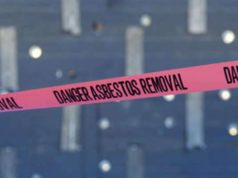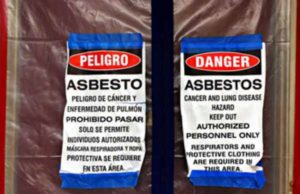
What is Asbestos?
Asbestos is a naturally occurring element that was commonly used as a construction material because of its heat-resistant properties. Its popularity was brought about by its core properties, including its electricity, ability to absorb and incredible resistance to heat. Moreover, in regards to cost and practicality, asbestos is preferred by a number of construction companies because it is cheaper when compared to other compounds in the market.
Asbestos is a mineral fiber that was widely used in a variety of building construction materials. Because of its heat resistant properties and fiber strength, asbestos has been used to manufacture goods, including floor tiles, paper products, roofs, shingles, friction products, automobile brakes, packaging, coatings and gaskets. Although harmless when left alone, asbestos is extraordinarily dangerous when asbestos pipes or products are contacted. When any asbestos-containing material is damaged or disturbed– whether by demolition, remodeling or repair activities—the fibers become airborne and are thus susceptible to inhalation. When inhaled, asbestos fibers stick to the lungs, and overtime, form cancerous tumors or other significant health problems.
Asbestos in the Environment:
Although the majority of mesothelioma cancers are formed from workplace asbestos exposure, asbestos filaments and fibers are naturally found in the environment. Asbestos fibers can enter the environment from natural mineral deposits which may be exposed to weather. That being said, the majority of asbestos filaments, especially those that perpetuate the formation of cancerous tumors, derive from contacting or tampering with workplace asbestos products.
The health impact of environmental pollution resulting from widespread industrial use of asbestos should be assessed in the following ways:
Direct epidemiological surveys indicate that domestic exposure has been responsible for the formation of mesothelioma cancers and radiological changes in family contacts of asbestos employees.
Several attempts have been made to extrapolate from asbestos exposure in industrial cohorts. For various reasons, especially in mesothelioma cancer, this approach is somewhat far-fetched: the equivalences of fiber and dust are primarily guesswork and the carcinogenic potential of mineral fibers will vary based on fiber type.
A final approach makes use of the differentiated incidence of mesothelioma cancers in men and women. Data from a number of sources indicate that until the 1950s, mesothelioma cancer was found equally in both men and women. Since this time, mesothelioma cancer cases in men have quickly risen, while in females, little or no convincing increase has taken place. These statistics suggest that the background level of mesothelioma cancer in both sexes is widely related to occupational exposure to asbestos filaments. Therefore, it is strongly recommended that mesothelioma surveillance, combined with appropriate inquiries, offers a suitable method of monitoring the impact asbestos and air pollution.





























